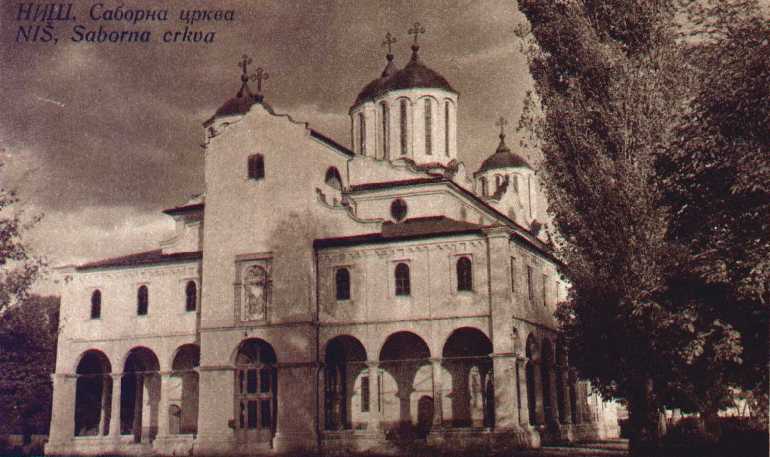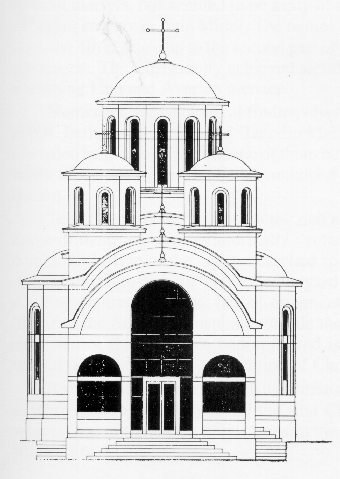
| 1. | Church of St. Nicholas in Kamenica, built in 1831, in the time of Metropolitan Grigorije |
| 2. | Gabrovac Monastery - the Church of the Holy Trinity, restored in 1833, during the administration of Metropolitan Grigorije |
| 3. | Church of Ascension in Gornji Matejevac, built in 1838, during the administration of Metropolitan Grigorije |
| 4. | Monastery of St. John in Gornji Matejevac, restored in 1838, during the administration of Metropolitan Grigorije |
| 5. | Church of St. Archangel Michael in Donji Matejevac, built in 1838, during the administration of Metropolitan Grigorije |
| 6. | Church of Assumption in Grkinja, built in 1838, during the administration of Metropolitan Grigorije |
| 7. | Church of St. Mother of God in Donje Medjurovo, built in 1839, during the administration of Metropolitan Grigorije |
| 8. | Church of Assumption in Miljkovac, built in 1839, during the administration of Metropolitan Grigorije |
| 9. | Church of Transfiguration in Hum, built in 1855, during the administration of Bishop Janicije |
| 10. | Church of Sts. Apostles Peter and Paul in Barbes, built in 1858, during the administration of Bishop Joanićije |
| 11. | Church of Sts. Apostles Peter and Paul in Jelasnica, built in 1869, during the administration of Metropolitan Kalinik |
| 12. | Church of St. Paraskeve in Malča, built in 1871, during the administration of Metropolitan Victor Čolaković |
| 13. | Church of St. Elias in Knez Selo, built in 1872, during the administration of Metropolitan Victor Čolaković |
| 14. | Church of Sts. Apostles Peter and Paul in Vrtište, built in 1879, during the administration of Metropolitan Victor Čolaković |
During the 20th century, and more in its first half, the majority of rural churches shall be restored, but some new temples would also be constructed, most often in the then prevailing Serbian-Byzantine style.
In Nis, the construction of the Cathedral, whose base irresistibly resembles the former Byzantine basilica in Curlina, in accordance with the attempts of the builders to find models in the Byzantine architecture, was finished in 1872. Even then, the bell tower could not be higher than the church roof, as the Turks protested.

CATHEDRAL IN NIŠ
The aspect before the bell tower was erected
The constructor of the Cathedral Andreja Damjanović skillfully united the motives of different styles, from the Serbian-Byzantine, through Islamic, Baroque and Renaissance, to those of Roman-Byzantine origin. This way, the Cathedral of Niš contributed to the development of the Serbian modern architecture and to the movement for the restoration of the "Serbian style".
Upon the Turks had been expelled from Nis, the first temple that was built in the town is the Church of St. Panteleimon. It was built for less than six months and consecrated by Metropolitan Victor Čolaković on August 6th 1878. It meant much more than a new temple at that time. The building of the Church of St. Panteleimon represents an important cultural event, by which the end of Osmanli occupation was marked, as well as the beginning of the construction of a new town of Nis, based on Serbian traditions.
Exactly 110 years had to pass before a new church started to be built in the town. On the slopes of the Delijski Vis Hill, Bishop Irinej Gavrilović, accompanied by Senior Nikanor, consecrated in 1987 the fundaments of the Church of St. Sava in the complex of the Chilandar-Appendant Church Estate in Niš.
By its architectonic forms, the Church of St. Sava represents a significant contribution to the creation of a modern national ecclesiastical architecture. It is not by mere chance that this clear and easily comprehensible architectonic expression originated from these grounds. It primarily represents the continuation of the tradition started by Andreja Damjanović and based on the principles according to which the Cathedral was constructed.

Church of St. Sava in the Chilandar-Appendant Church Estate
A look from the west
The ecclesiastical architecture in Nis at the end of the 20th century may be defined as a symbiosis of old Serbian forms and Byzantine elements, but, as opposed to the second half of the 19th century, simplified and reduced to the manner acceptable in modern architectonic solutions. The old architectonic forms were revived in the new Serbian ecclesiastical architecture, which brought about a repeated application of Byzantine models. The medieval models were worked out and reduced, so as to be more comprehensible to the modern man. In principle, it is based on the reconciliation of the medieval Serbian tradition and the post-modern academic knowledge.